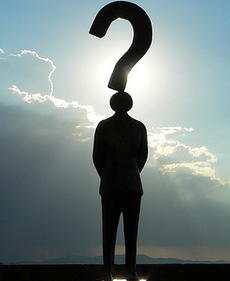 We had our tenth Introduction to Meditation Class at Yoga Bliss. We practiced a guided meditation inquiry, Who Am I? Instructor and author, Tara Brach, uses this practice to help us see beyond our stories of self and enter the revealing the mystery of our true nature.
We had our tenth Introduction to Meditation Class at Yoga Bliss. We practiced a guided meditation inquiry, Who Am I? Instructor and author, Tara Brach, uses this practice to help us see beyond our stories of self and enter the revealing the mystery of our true nature.
In Tara’s book, True Refuge, she encourages readers to use the inquiry both formally, in meditation, and informally, in every day life, by taking a few moments to pause, look into our awareness and question what is true. Then we let it be.
Over time our sense of being a “separate self” becomes apparent and we can also experience the boundless nature of pure awareness.
Tara suggests that it’s helpful to think of our experience, what we encounter in our daily activities – readying ourselves for work, tending to our friends and family – as the foreground of life and that awareness is the background. We can shift our focus from the foreground of activity to resting in pure awareness or being which she calls “the backward step.”
Whenever we step out of thought or emotional reactivity and remember the presence that is here, we are taking the backward step. If we wake from a confining story of who we are and reconnect with our essential awareness, we are taking the backward step. When our attention shifts from a narrow fixation on any object – sound, sensation, thought – and recognizes the awake space that holds everything, we are taking the backward step.
She describes this as “receiving the world.” In the spaciousness of awareness we are like the sky with birds flying through.
We explored this with the age old inquiry: Who am I? If we inquire openly and sincerely we find there really isn’t a fixed answer. After we go through the spiraling thoughts of our history, work, gender, age and status we find that, in truth, there is no inherent “I” at the center of awareness. If we can live our questions perhaps the sense of a searcher fades and we are met with silence.
The silence we discover reveals the qualities of awareness. Tara describes them as:
- an emptiness or openness. Awareness is devoid of any form, of any center or boundary, of any owner or inherent self, of any solidity.
- awareness . . . alive with wakefulness – a luminosity of continual knowing. . . the second basic quality of awareness: awakeness or cognizance.
- the spontaneous response [to anything that comes to mind] is warmth or tenderness. This is the third quality of awareness: the expression of unconditional love or compassion.
Tara writes that the three fundamental qualities of our being: openness/emptiness, wakefulness and love are always here.
We discussed ways to bring informal inquiry into our day. I shared my earlier experience of hearing meditation teacher, Michael Stone, talk about “listening without wanting.” Hearing these words, I felt like a struck bell – the phrase has reverberated inside me all day. There are so many subtle ways that wanting manifests in the way I listen to others – how I listen to life. What does it mean to listen without wanting? My mind is lightening fast in anticipating what an other is saying and formulating my response will be. This sense of self seems to crowd our the time and room for surprise or a true meeting.
As I continued to “live” this question today it began to color my perception and memory. Yesterday I attended my grand-daughter’s YMCA Magic camp. I sat patiently through many exercises in “magic” and “illusion.” Today, what becomes more clear is the unabashed joy the kids expressed as they attempted to entertain us. Their unspoken inquiries, “do you see me?”, “do you hear me?”, now reverberate inside me. Our ability to move our attention from the foreground to the background is profound. Yet it’s truly magical when we can bring the qualities of awareness, openness, attention and love, into the foreground as we meet each other every day.
You can find this week’s homework and other resources at:
Sunday Meditation Class 10 Homework
